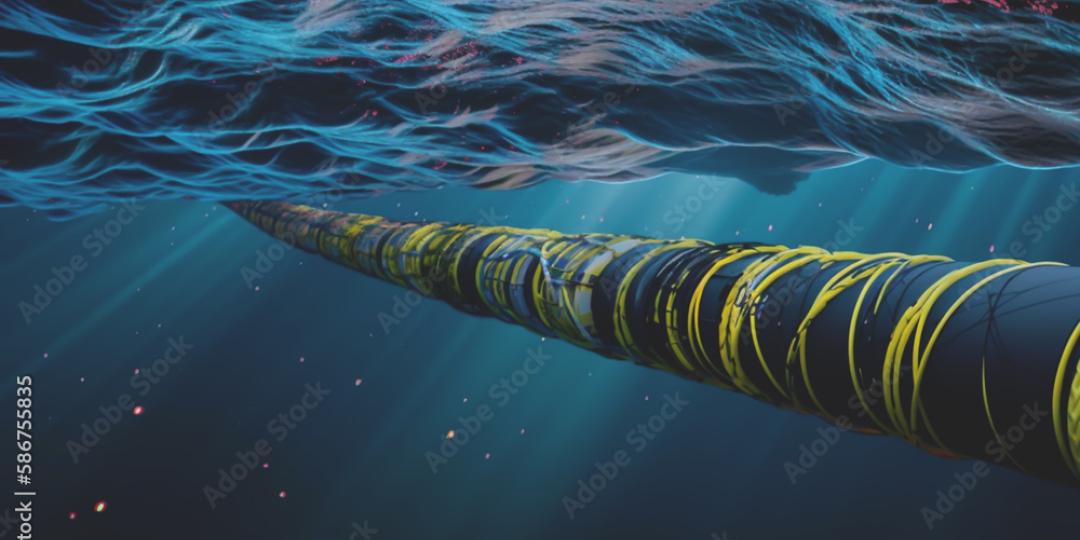South Africa was hit with a large Internet outage affecting users across the country. It included a lack of Internet access and users unable to use some online services like Microsoft 365. Signals of four major submarine cables, the West Africa Cable System (WACS), the Africa Coast to Europe (ACE), MainOne, and SAT3, were lost.
There is no clarity if the disruption was caused by breaks in the cables, or other issues like power supply connections. None of the companies involved are sharing information. If it is a break, which most probably is the case as it's rumoured that a cable repair ship is enroute to Azerbaijan where the problem appears to be.
Two years ago, the area 10 km off the coast of Azerbaijan suffered an 8-minute-long mud volcano eruption on Dashli Ada in the Caspian Sea, which caused a massive explosion and fireball, seen across the region. The last volcanic eruption in the area was recorded in 1945 and the preceding one in 1920. Did it happen again this week?
On Thursday 14 March, reports were streaming in from South African Internet users about problems accessing many high-profile online services. These services included FNB, LinkedIn, Microsoft 365, Microsoft Teams, WhatsApp, X (Twitter), and Xbox. Many broadband users, including Mweb, Openserve, Seacom, Telkom, Vodacom, Vumatel, and Vox subscribers, also reported problems with their Internet access.
This is the second time in less than a year that South Africans suffer a major internet breakdown. The previous one was in June 2023 when a rockfall off the Congo coast took out WACS and SAT-3. It took till 6 September that year for both cables to be fully restored.
The East Coast Seacom’s cable is also suffering connectivity problems which cannot be restored due to issues in the Red Sea. The company has however confirmed that it managed to restore connectivity for its customers by rerouting to other cables.
Since the event on Thursday, companies whose services were affected scrambled to route their connections on other available cables, which to a large extent was successful.
Microsoft’s services were seriously disrupted. The company originally made a statement that services would be restored within an hour, but it did not happen. It appears that they did not have enough capacity on other cables systems to reroute and had to shop around to secure alternative bandwidth. While not confirmed, it is believed that most of Microsoft’s services run on the WACS cable. The company has gone out of its way to secure more bandwidth. While Microsoft’s services have been restored, response times tend to be slower than normal.
MainOne, which is owned by data centre operator Equinix, said that an "external incident" resulted in a cut to its cable system in the Atlantic Ocean, offshore Cote D'Ivoire along the coast of West Africa. It ruled out human activity as a cause. "Our preliminary analysis would suggest some form of seismic activity on the seabed resulted in a break to the cable", MainOne said, adding it would obtain more data when the cable is retrieved during repair.
"Given the distance from land, and the cable depth of about 3 km at the point of fault, any kind of human activity – ship anchors, fishing, drilling etc has been immediately ruled out," it said.
Angola Cables was one of the companies that were quick to issue a media statement. In an email to EngineerIT on Thursday, hours after the break, the company said: ”Whilst the cause of the reported cable breaks off the Ivory Coast of West Africa has not yet been confirmed, Angola Cables is ensuring that the impact on Angola and other African countries is being minimised by redirecting international data and traffic to the SACS cable, which connects Angola directly to Brazil and from there to the United States and Europe.
''Angola Cables has network backup and restoration solutions available through cables that have not been affected by the faults off the Ivory Coast.
''Our technical team is currently diligently working with industry partners to stabilise international connectivity and to ensure that we can provide support and guarantee the stability of services to African network operators and entities that need it. “
Very little other information and the timeline of restoration is forthcoming from the owners of the affected African West Coast cables.
Why are satellites not used more?
Being the second major submarine cable break in less than a year, the question, why are satellites not being deployed more, is raising its head again. For many years, latency was always the reason. A satellite signal has to travel a long distance which is responsible for introducing latency. However, technology has advanced and latency effects can be minimised. Perhaps the time is now to re-open the debate and explore satellite as another major alternate route to undersea fibre cables.















